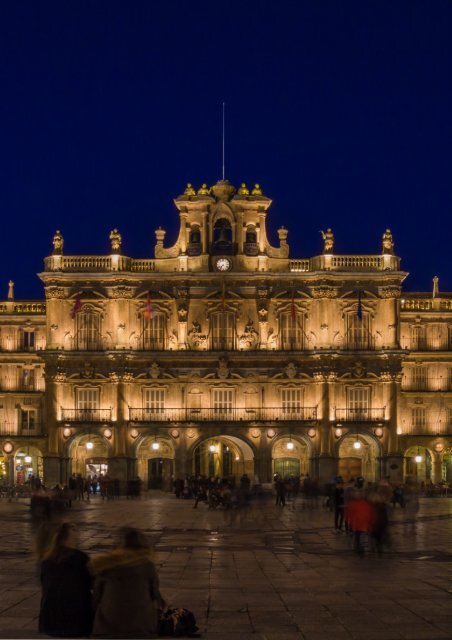Polyglossia 2017
You also want an ePaper? Increase the reach of your titles
YUMPU automatically turns print PDFs into web optimized ePapers that Google loves.
The memory of the dictatorship is still<br />
alive for many, particularly those who experienced<br />
it personally. Indeed, it is unsurprising<br />
that there should exist Spaniards who remain<br />
in support of Francoism given the length of the<br />
regime and the illegality of political opposition<br />
throughout its duration, coupled with its airtight<br />
propaganda machine. Yet since the Transición<br />
began there has been an outpouring of reactions<br />
against public monuments Franco’s<br />
honour. In 2007 the government prohibited official<br />
public references to Franco; thus, buildings<br />
and streets named after El Caudillo reverted to<br />
their original names, and memorials were removed,<br />
the last of which being an equestrian<br />
statue in Santander in 2008. Last year the city of<br />
Malaga also revoked his honours and distinctions.<br />
These conflicting associations are symbolically<br />
summed up in the fact that while the<br />
national anthem, the Marcha Real, is no longer<br />
sang with the lyrics introduced under Franco,<br />
no new lyrics have been introduced due to a<br />
lack of consensus. The decision to remove the<br />
plaque, conversely, 'tenía que ser tomada por unanimidad,’<br />
according to historian María José Turrión,<br />
a commission member. Thus, for the<br />
commission, the answer is that Franco does not<br />
fit in, either artistically, architecturally, categorically,<br />
or as a worthy emblem of Spanish history.<br />
And yet, adjacent to the Pabellón<br />
Real, the Pabellón de San Martín boasts an array<br />
of conquistadores, such as Cristóbal Colón and<br />
Hernán Cortés. A few kilometres further west in<br />
Salamanca there lies the Plaza de Colón, with a<br />
monument of the conquistador as its centrepiece.<br />
With colonisation still largely viewed as a<br />
major scientific and geographical discovery in<br />
Spanish history, it seems that it is not only recent<br />
history with which the country has yet to<br />
come to terms.<br />
Churchill, Shakespeare<br />
and the Jocs Florals<br />
Saint George from England to Catalonia<br />
Adrià Salvador Palau<br />
Afra Pujol i Campeny<br />
On May 28th 1943, Winston Churchill flew<br />
from Gibraltar to Algiers on his personal airplane,<br />
‘Ascalon’, named after the sword of Saint<br />
George. That year marked a turning point in<br />
WWII: the Allies advanced on both the Eastern<br />
Front and in Italy. Two years later, Germany surrendered<br />
and a decade later, Churchill received<br />
his Nobel Prize in Literature for ‘mastery of historical<br />
and biographical description as well as<br />
for brilliant oratory in defending exalted human<br />
values’.<br />
One wonders how Churchill would react<br />
to recent arguments about the celebration of<br />
Saint George in England. When debating<br />
18


